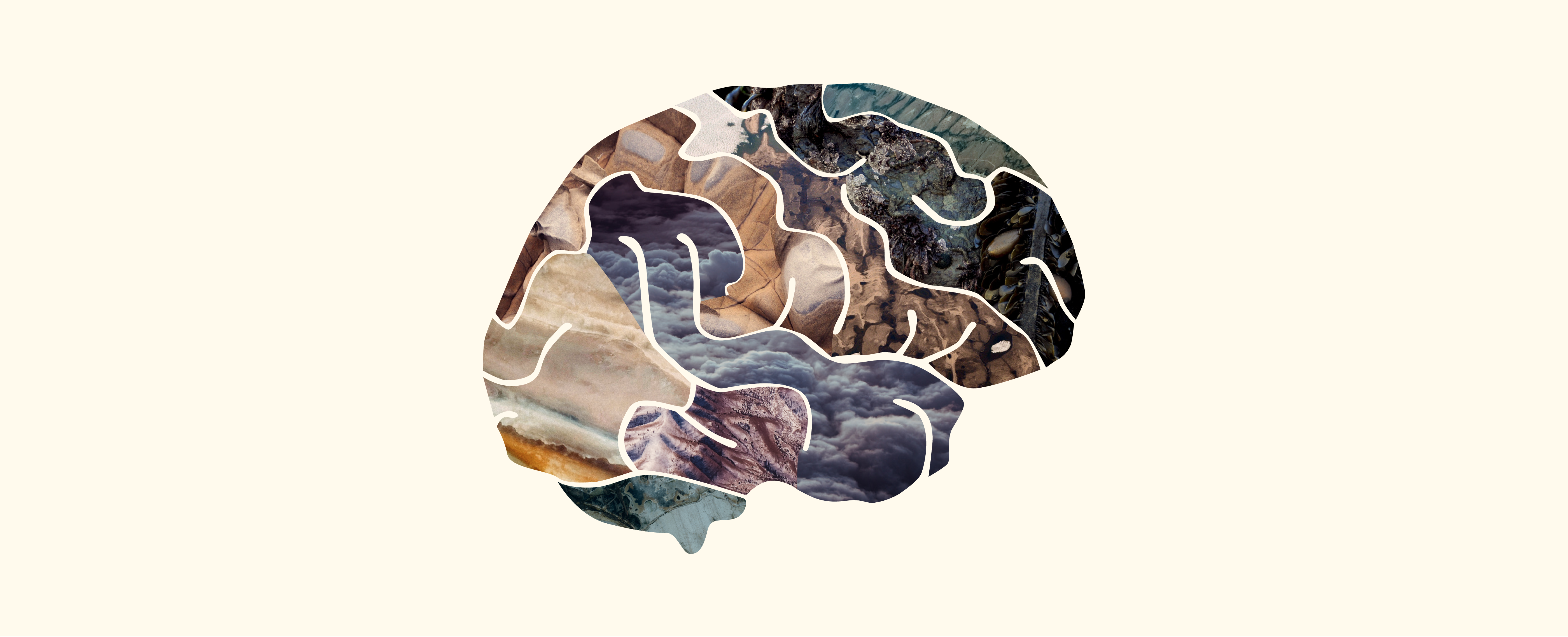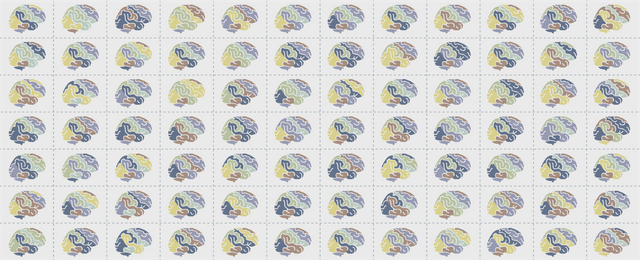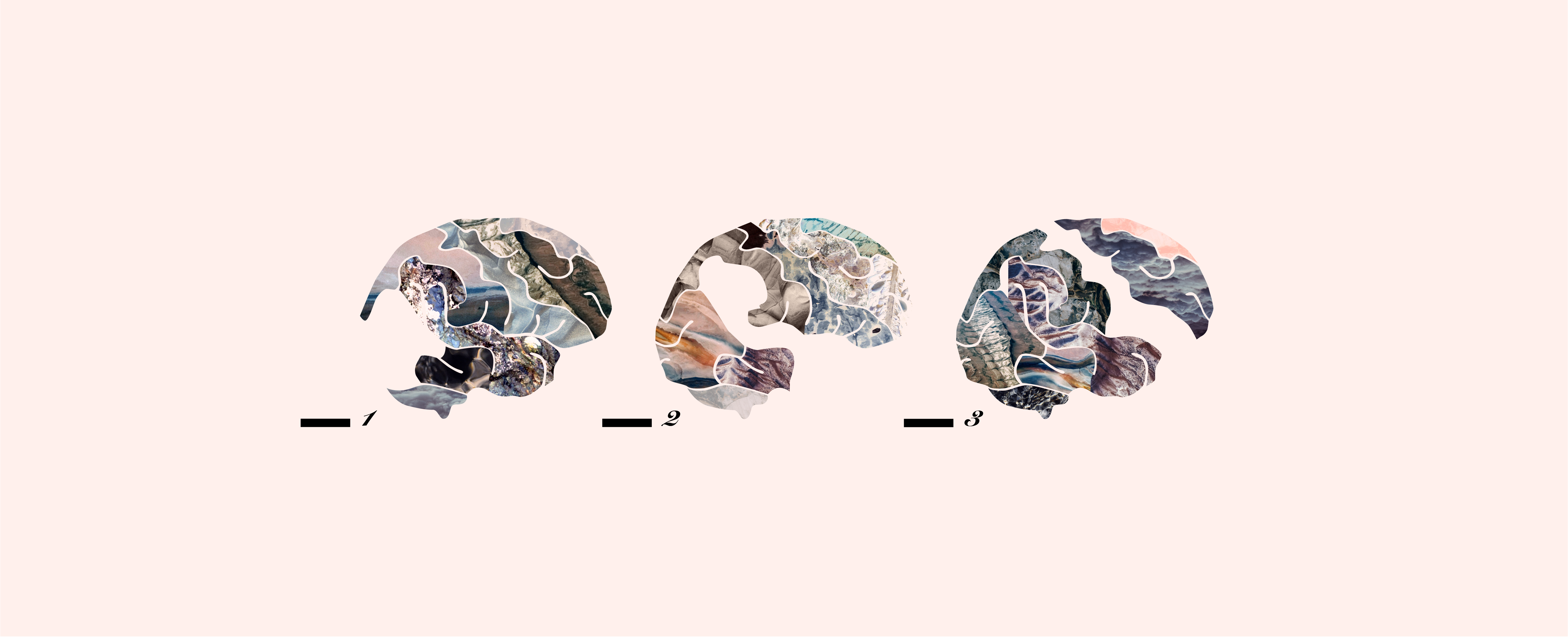The mental and metaphysical effects of microdosing LSD

It’s 7am on the uBahn. Eyes still puffy from the night before. A woman slowly nibbles her morning brötchen while staring into the static on the broken TV above. Everyone is silent. And in this crowd of straight faces, there I am: grinning like an idiot. Why? I have a little secret. There’s acid under my tongue.
This slightly mischievous feeling is familiar to me. I’ve taken 1P-LSD (a legal LSD analog in Germany) over 50 times in the last six months. Most doses have been small. So small that they’ve merely lifted my mood, generally speaking. But somehow each and every time still feels brand new.
These ritual doses have drastically improved my life and reshaped my perception, but what’s really been going on inside my head? It seems my brain has been especially malleable these last few months. I’ve been able to untangle the knots of thought that eclipsed my reality and made everything a little darker.
We still don’t know exactly what microdosing does to the brain over time. But new research is beginning to unveil the effects of LSD: It interrupts your regularly scheduled programming. Default networks of the brain quiet down, making way for new channels and connections (1). So previously segregated regions of the brain begin communicating (2). Like upgraded lighting to dim fluorescents and brighten shadows in your mind. Illuminating corridors and doors you never knew existed.
There are also hypotheses floating around that psychedelics can reroute neural pathways (3), replace outdated pharmacology for depression (4), and maybe even contribute to small amounts of neurogenesis (5). The questions are open.
And while I’ve been eagerly awaiting more psychedelic research, better information for harm reduction, and sane legislation, I couldn’t wait to try microdosing. I needed help our medical system, or even a therapist, couldn’t provide.
I was sick and tired of feeling sick and tired, sussing out my options. I trusted psychedelics based on past experiences and decided to start James Fadiman’s dosing regimen. One day on, three days off. I usually take 10–20 mcg, but some people take as little as 3 mcg per dose.
Whether you’re for, against, or simply curious about microdosing, more and more people are trying it and reporting noticeable improvements in their psyche and life. So far, I feel different. And I feel good. That might sound like a weak sell, but anyone who’s been in a few existential buckles or straight-up pain knows that just feeling good is a feat.
The effects of microdosing
Disclaimer: My continued use and microdosing protocol is not exemplary. I’m not a scientist. I’m not a doctor. No lab coat, no letters after my name. I’m writing this from a cafe in a bright yellow hoodie. This is my n=1, anecdotal, qualitative experiment. This has worked for me and the betterment of my moods, but might be completely different, or even dangerous, for you. The long-term effects of microdosing on the brain and the heart remain unknown…
I like to try different things and see how they make me feel. And I’ve been pretty open about microdosing, so friends, family members, and random dudes on LinkedIn have been asking me: how’s it going? I’m realizing the answer is not so simple — “It’s going well!” But there’s a lot to process. Microdosing LSD isn’t like drinking a coffee or popping an Adderall. The experience has been much more complicated than taking your classic stimulant.
Psychedelics don’t just send you on a temporary trip, no matter how slight or strong the high. Insights from small and large doses of psychedelics can be integrated into daily life with intentional use and reflection. But what’s even more interesting is that these substances seem to physically change the brain over time. Especially when taken on a regular basis.

And after dozens of doses, it’s clear: microdosing hasn’t just tapped my mental state, but it’s also impacting the way I interact within myself, my relationships, and my environment. In slight and significant ways.
The most important change I’ve noticed is a reintroduction to the most elementary forms of happiness, joy, and awe. As someone who goes between emotional highs and lows, microdosing has significantly uplifted and balanced my general mood and perception of everyday life. It’s easier to look up and out, rather than spiraling inward into disintegration.
Microdosing makes it hard to stay inside all day and easy to marvel at the little things too often ignored or taken for granted.
A few weeks into dosing, a friend noticed how happy I seemed and asked me if I’m just coating my issues with yet another coping mechanism. Another drug, another clutch. But microdosing doesn’t cloud my vision or tune out my issues (we’ll always have alcohol for that). Rather than an escape or release, microdosing is the opposite. It’s a direct confrontation with everything in my life. No more avoidance. No more hiding.
Everything is right before my eyes in sharp 20/20 vision.
LSD wipes away the murky filter that usually makes me hypercritical and negative. Don’t get me wrong, I’m still hypercritical and sensitive to my surroundings, but being that way doesn’t get me down like it used to.
Example: I’m on a plane. A baby is wailing a few seats behind me. Like really screeching at the top of his little lungs. A couple years ago, this would have worked my nerves, but I’m less of a grouch now. I’m more likely to smile and think to myself, “that used to be you, and that’ll probably be you again” and get over it much quicker. Emotional time saver.
Microdosing makes dealing with difficulties, at any scale, a bit more accessible. And just like meditation, mindfulness, or yoga, it alters the way you react to your surroundings. All of these tools help you adapt to situations, realities, and emotions with a bit more ease. An unexpected trial or tribulation that would historically ruin your afternoon might shift your state of mind for less than a few minutes. It’s easier to deal with daily disturbances and let them slide.
I’m less likely to get stressed out about things coming in the future or things that happened in the past when LSD’s in my system. Emotions become more rooted in the here and now. And remember: for anyone who overthinks the past or the future, achieving this kind of emotional clarity is no walk in the park.
Being more situated or “present” in the moment will also make you more concentrated and less easily distracted. When you’re no longer intimidated or overwhelmed by things to come — maybe the weight of a deadline or hectic meeting — procrastination and avoidance melt away. So when it comes to work, I’m definitely more productive. But that’s more of a positive side effect. Microdosing for occupational advancement is not my goal, intention, or priority. I’m much more interested in its potential to ease depression and other existential debacles. To be or not to be.
I’m less uncertain about that now. More confident simply being. And less apologetic for existing, for taking up space — something I was programmed to do growing up as a young woman in the US. “Sorry!” “Excuse me!” For what?
It’s important to remember that just being, or functioning as a human, isn’t easy for anyone, but it’s especially difficult for people with mental dips, complications, or oddities.
Existence used to be unbearable for me. Especially in my teens and even early 20s. So I clung to reckless, addictive, selfish, and maladaptive tendencies. It was nightmarish. I dove from one intense emotion to the next and barely came up for air. I was doing a lot of non-psychedelic drugs at a young age, and definitely inflicted some noticeable damage to my brain/memory and impacted my own emotional and cognitive development. I had a hard time in school, a hard time with my parents, and a hard time taking care of myself.
Finally realizing all of this was difficult, but it was also a breakthrough to move forward.
I’ve come a long way since thanks to a delicate balance of many factors, not just microdosing. Bottom-up bodywork, close relationships, a bit more conscious media consumption, and moving to new continent all helped. Microdosing is just another tool, another supplement. The molecule itself doesn’t do the work, I do.
Regardless, psychedelics have played a critical role in my “healing” or “development,” aka finding a bit more ease within my existence.
“[Psychedelic researcher] Carhart-Harris believes that people suffering from mental disorders characterized by excessively rigid patterns of thinking, such as addiction and obsessive-compulsive disorder, could benefit from psychedelics, which ‘disrupt stereotyped patterns of thought and behavior…’ It may be that some brains could benefit from a little less order.” -Michael Pollan
I have no idea what kind of synaptic pruning and blooming has been taking place to parse through previously mangled patterns in my mind. But I truly believe these routine tune-ups have helped clear some blockages.

These tiny doses of LSD shut down the kind of overthinking that manifests in severe self-doubt and self-harm. “Where do I fit here?” “I should just be quiet.” melt into “Let’s go.”
This lack of filter or tether can swing the other way, and make you come across a bit more brash from time to time. But for the most part, it’s done nothing but improve my relationships with myself and others. I’m still the same Erica, but I feel better about being me. I’m ecstatic just to be here, and that’s the difference. It’s like cutting all the strings that used to tie you back from just living.
Not only do I feel more comfortable in myself, but I also feel more aware of my body, my posture, and the alignment of my bones. I walk more, run more, stretch more. I make sure to look up more often and put my phone down. Let’s do it together now~
✸ Neck break: Look up. ✸
So I’m more in tune with myself and my context. Honing in on every little detail while taking in the big picture. LSD can definitely amplify what you see, and what you feel, based on your surroundings. This can go both ways, too — the good, the bad, and everything outside and in between.
Something to consider: Being more mindful or vigilant isn’t always ideal. Microdosing can heighten anxiety in certain situations. For example, one morning when I was microdosing, a man sexually harassed me on the street. This is a very regular occurrence for young women especially, and on any other day, I’d twist up my face, blurt some profanity, and keep walking. This time, I did the same, but on top of that, I ruminated on it for the next hour. Going over the situation again and again in my head. HOW IS THAT OKAY? WHY IS THIS NORMAL? I was worked up, fixated. So, sometimes, being more aware, can also mean more pissed and frustrated. (Because, hey, what a world.)
It’s not all roses. I had two other bad experiences while microdosing, both all-consuming manic episodes that sent me into quite a panic. To be fair, on both of those occasions I also had a lot of caffeine. I’ve noticed that too much caffeine + LSD can be extremely overwhelming on the nerves and senses. So yes, in some contexts, microdosing has actually worsened my anxiety and mania. Another not-so-ideal scenario: Microdosing can intensify symptoms of a brutal hangover or sleep deprivation. So I don’t dose if my body’s not up for the additional energy output.
There’s no magic pill. Microdosing is not a good-time-guaranteed, call-now-just-$19.99 type of “remedy” or fast treatment. The experience varies, just like the complications in our mind vary. Every day our bodies are a little bit different from the next because we’re working with a new day and new circumstances. Our mindset is engaged in an inverse relationship with our environments. We create and are created by our contexts. And in many cases, we don’t need drugs, just a new environment.
Microdosing is a great way to show you what you need to embrace or change about your habits, behavior, and environment to move closer to your congruent self.
“For some people, it is helpful to identify your goals. Your goals may be spiritual: to have direct experience with aspects of your tradition or another tradition, to transcend prior beliefs, even to transcend belief itself… Your goals may be social: to improve relationships with your spouse, children, siblings, parents, colleagues, friends, and spiritual and secular institutions. Your goals may be psychological: to find insight into neurotic patterns, phobias, or unresolved anger or grief.” — Dr. James Fadiman
Microdosing LSD feels like long-term cognitive behavioral therapy that works at the root causes, rather than coating the symptoms like antidepressants or antipsychotics. I can’t say it’s “cured” me of all my ailments or regular frictions that come with being human. But microdosing helps me deal with a bit more happiness and ease. And for that, I’m grateful.
Looking back at these last six months makes it painfully obvious: more people need access to this kind of treatment. Maybe now more than ever. Amidst the rising cultural chaos, social division, violence, mistrust, opiate addiction, environmental disarray, and media noise, integrated and safe psychedelic use provides a glimmer of hope.
The future of psychedelic care
If you really think about it, it shouldn’t be so controversial that mind-altering substances have the power to change and heal complications of the mind. More people are coming out of the sometimes-I-alter-my-consciousness closet to vouch for psychedelics. Frustrated researchers, psychiatrists, policy makers, doctors, writers, artists, tech workers, students, and activists are working to destigmatize these substances and bring them out into the open.
The current denial of psychological experimentation and cognitive freedom is not only a public health issue. It’s a human rights issue, and the walls are finally coming down.
What took so long? What’s next? We need more data and more stories. And they’re coming. Research has been pouring out of universities like Imperial College London, Johns Hopkins, Bristol, Yale, NYU, and Harvard proving these substances work. Roland Griffiths, a researcher at Johns Hopkins University, compares the effects of psychedelics on the brain to “surgical intervention.”
The implications for psychedelics to transform psychiatry can no longer be ignored by the mainstream public or government now that study after study is proving the efficacy of psychedelic-assisted therapy and medicine.
“The problem with dismissing psychedelics is that they work. Why? Because they seem to be able to transform these hard-wired neural patterns, rerouting them in as little as one dose.” — Khaliya Ermacora
Most people taking psychedelics in 2017 aren’t slouching towards Bethlehem or some idealistic, unrealistic dream world. While Haight-Ashbury hippies failed to communicate the legitimate promise of psychedelics to reframe the world and ways we take care of ourselves, communities, and environment, people approach it differently today. Whether using psychedelics to heal, to explore, to learn, or just to enjoy the last drop, this is our reality to alter.
References
- Carhart-Harris, R L, Friston, K J. The default-mode, ego-functions and free-energy: a neurobiological account of Freudian ideas. Brain. (2010)
- Carhart-Harris, R L et al. Neural correlates of the LSD experience revealed by multimodal neuroimaging. Proc. Natl Acad. Sci USA. (2016).
- Petri, G, Expert, P, Turkheimer, F, Carhart-Harris, R L, Nutt, D, Hellyer, P J, Vaccarino, F.
Homological scaffolds of brain functional networks. Journal of the Royal Society Interface. (2014) - Baumeister D, Barnes G, Giaroli G, Tracy D. Classical hallucinogens as antidepressants? A review of pharmacodynamics and putative clinical roles. Therapeutic Advances in Psychopharmacology. (2014)
- Catlow, B J, Song, S, Paredes, D A et al. Effects of psilocybin on hippocampal neurogenesis and extinction of trace fear conditioning. Exp Brain Res. (2013)